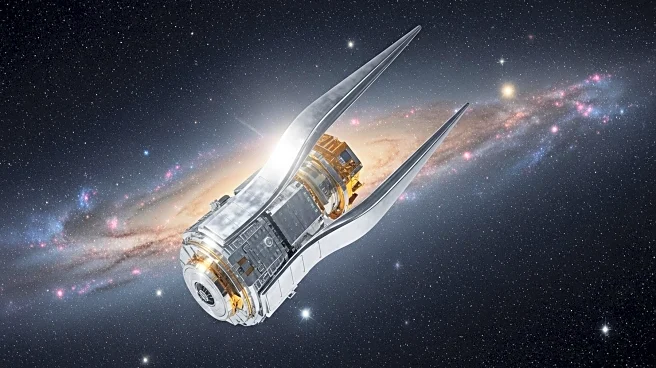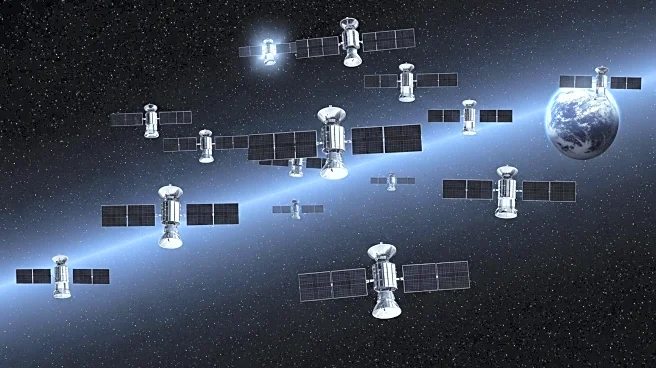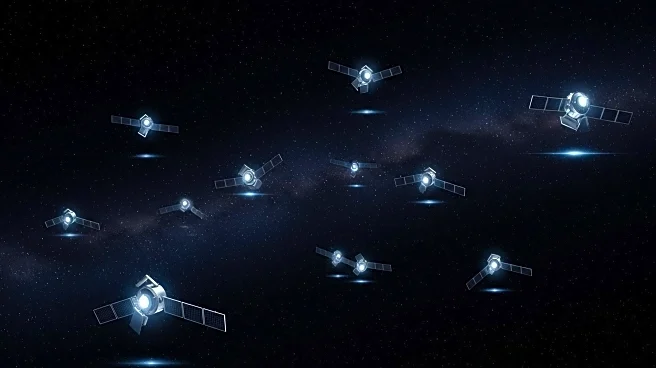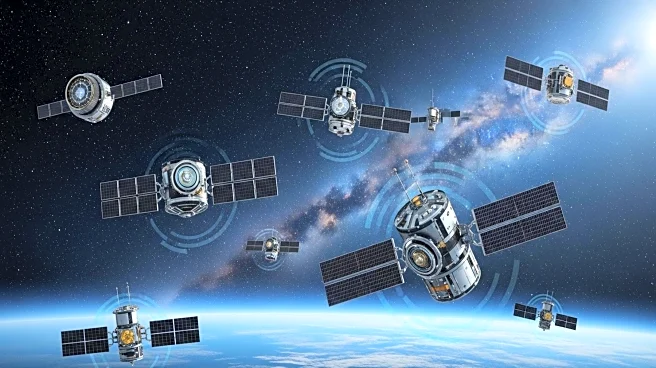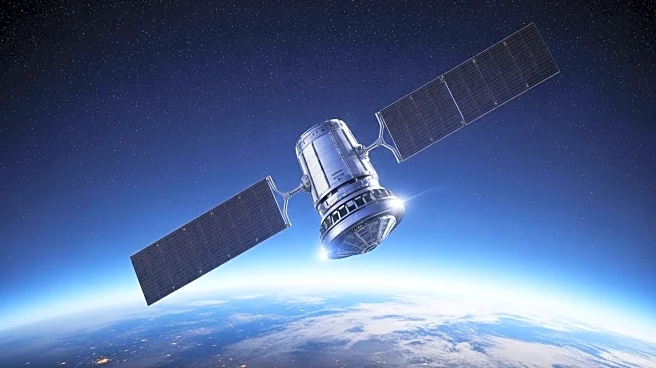What's Happening?
Viasat's second ViaSat-3 satellite has been delivered to Florida, preparing for a launch scheduled in the second half of October. The satellite, weighing six tons, was transported from Boeing's factory in California and will be integrated with a United Launch Alliance Atlas 5 rocket. This launch follows an earlier deployment issue with ViaSat-3 F1, which affected its capacity. ViaSat-3 F2 is expected to provide broadband services over the Americas, with plans to reposition ViaSat-3 F1 to cover Europe, the Middle East, and Africa. Boeing is also constructing the Asia-focused ViaSat-3 F3, set to enter service in 2026.
Why It's Important?
The deployment of ViaSat-3 F2 is crucial for Viasat's strategy to enhance its broadband capabilities, particularly in aviation and maritime sectors. The satellite's terabit-per-second capacity is essential for competing with SpaceX's Starlink constellation, which offers similar services in low Earth orbit. The flexibility of the ViaSat-3 satellites to be positioned globally based on demand allows Viasat to optimize service delivery and customer value. This launch represents a significant advancement in satellite technology, potentially influencing market dynamics in the satellite broadband industry.
What's Next?
Following the launch of ViaSat-3 F2, Viasat plans to reposition ViaSat-3 F1 to cover regions originally intended for ViaSat-3 F2. The company will continue to monitor and address any technical issues to ensure optimal performance. The upcoming launch of ViaSat-3 F3 will further expand Viasat's global coverage, enhancing its competitive edge against other satellite broadband providers. Stakeholders in the aviation and maritime industries are likely to benefit from increased bandwidth and improved connectivity.
Beyond the Headlines
The expansion of Viasat's satellite network may have broader implications for global internet access, particularly in remote and underserved areas. The increased capacity could facilitate advancements in telecommunication technologies and services, impacting sectors such as education, healthcare, and emergency response. Additionally, the competition between satellite providers like Viasat and SpaceX may drive innovation and reduce costs, making satellite broadband more accessible to a wider audience.

